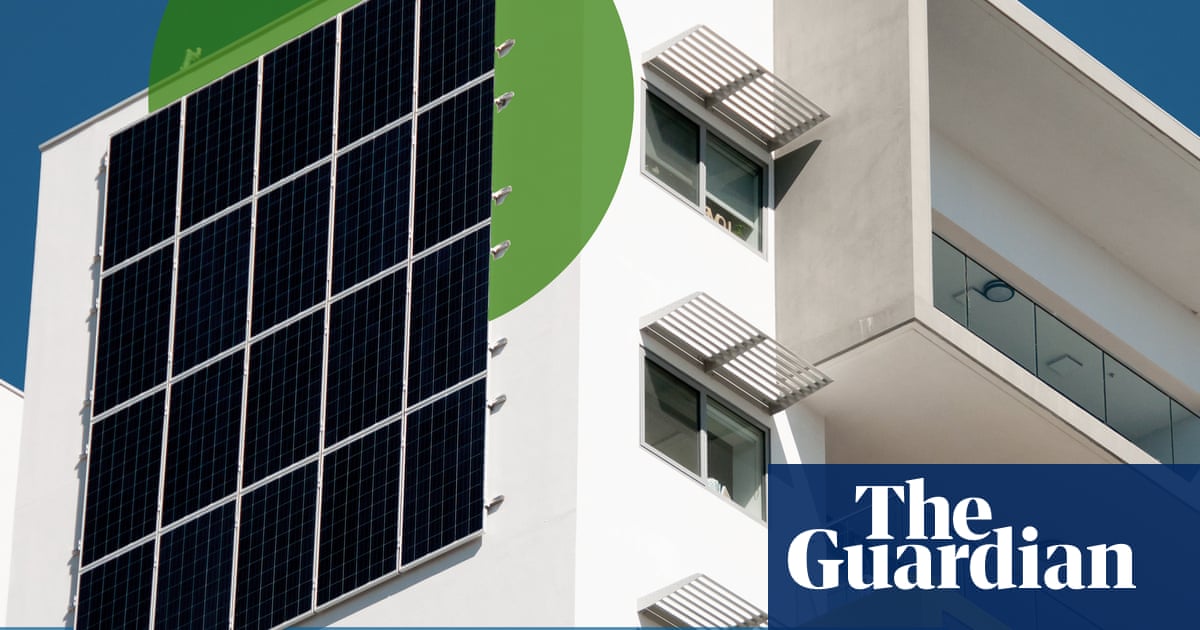Australia has the highest uptake of rooftop solar in the world – with more than 4m solar installations across the country.
In 2022 more than 30% of Australian households were generating solar energy on their rooftops – but in many cases those living in apartments have been left behind.
Despite accounting for 16% of Australia’s dwellings, only about 3% of apartments have solar installed.
In a bid to give apartment dwellers the same opportunity to access clean and affordable solar energy, state governments are offering generous rebates to help them join the clean energy transition, includingthis program, open to apartment owners in NSW.
But there are a few steps you’ll need to consider before signing up.
Rob McKay lives in a block of nine double-brick apartments in the Sydney suburb of Cremorne with a mix of renters and owner occupiers.
“We first started looking at solar for the building before Covid. We’re fortunate in that our local council, North Sydney, is very supportive of sustainability options,” he says, noting in particular council rebates for solar panels and batteries.
“We realised we were eligible for a battery rebate from the state government [as well as] the North Sydney council rebates.”
After researching the options he found out about technology that enables the allocation of power between multiple units behind the meter. The next step was to use a solar comparison website to assess the building’s solar and battery needs, as well as EV infrastructure requirements in the building’s basement.
“Armed with that information, we ran a tender for solar and battery suppliers, chose a preferred supplier and installed a system that went live in December” he says.
McKay says that, in retrospect, the delays from lockdowns were a blessing as they allowed the apartment block time to build up its capital works fund (thereby avoiding the need for a special levy) and to understand the options better. “Since flicking the switch, we’ve generated 82% of our overall power consumption, although we share that in both directions with the grid.
“As a result, we’ve had material decreases in our individual power bills and happy residents, whether owner occupiers or tenants.”
Once you’ve figured out which rebates you are eligible for, you’ll still need to navigate a careful path between your owners’ corporation, fellow apartment owners or occupiers and strata managers.
Be prepared to come up against some resistance, as some owners may not be keen to front up the extra costs involved, especially in a cost-of-living crisis. But highlighting the longterm economic savings of the investment is a good strategy.
Jeff Sykes from Solar Choice says the benefits can be enormous for apartment dwellers as they are often the people most in need of assistance with growing energy costs.
Sign up for Guardian Australia’s breaking news email
“Shared solar projects targeting the whole building also benefit renters who traditionally have been left out of solar projects,” he says.
“The feedback once solar is installed is almost always overwhelmingly positive and these projects will improve the property values of all owners and deliver benefits to residents for 25 years.”
McKay says the best way to bring neighbours along for the journey is to install a smart meter so that everyone can see how the power is being distributed. This also helps to keep up regular communication throughout the installation process.
“It has made residents more aware of their power consumption, opening up more electricity retailer options for them,” he says.
Ultimately, if you can help get everyone’s power bill down while reducing your carbon footprint, that’s a win for everyone.
Your contact details are helpful so we can contact you for more information. They will only be seen by the Guardian.
Your contact details are helpful so we can contact you for more information. They will only be seen by the Guardian.
If you’re having trouble using the form, clickhere. Read terms of servicehere.
